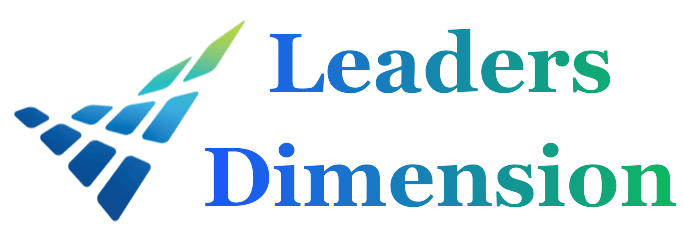Retail and Home Sales: Navigating a Challenging Economic Landscape
U.S. retail sales in May rose by a modest 0.1%, missing expectations, while existing home sales declined by 0.7%. The Leading Economic Index (LEI) dropped 0.5%, signaling potential slower economic growth ahead.

U.S. Retail and Home Sales: Indicators of Economic Challenges Ahead
The U.S. economy is experiencing a mixed bag of signals as both retail and housing markets show signs of strain. In May 2024, retail sales in the United States rose by a modest 0.1%, falling short of the expected growth rate. Simultaneously, the housing market experienced a decline, with existing home sales dropping by 0.7%. These developments come alongside a 0.5% decrease in the Leading Economic Index (LEI), suggesting potential slower economic growth in the near future.
Retail Sales: A Modest Increase
1. Retail Sales Performance
The U.S. Census Bureau reported that retail sales, which include spending at stores, restaurants, and online, increased by 0.1% in May. This modest growth fell short of the 0.3% increase that economists had anticipated. On a year-over-year basis, retail sales rose by 2.3%, reflecting ongoing but subdued consumer spending.
The marginal increase in retail sales can be attributed to several factors. Rising inflation has led to higher prices for goods and services, which in turn has dampened consumer purchasing power. Additionally, consumers are becoming more cautious with their discretionary spending, prioritizing essential purchases over non-essential items.
2. Sector-Specific Performance
Different retail sectors showed varied performance in May:
- Gasoline Stations: Sales at gasoline stations fell by 2.2%, driven by a decline in fuel prices. This sector has been particularly volatile, influenced by fluctuations in global oil prices.
- Restaurants and Bars: Sales in this sector decreased by 0.4%, indicating a potential slowdown in consumer dining out.
- Nonstore Retailers: This category, which includes online shopping, saw a 1.2% increase, reflecting the ongoing shift towards e-commerce.
- Health and Personal Care Stores: Sales increased by 0.5%, indicating steady demand for essential goods.
Housing Market: A Decline in Sales
1. Existing Home Sales Drop
The National Association of Realtors (NAR) reported a 0.7% decline in existing home sales in May, marking the third consecutive month of decreases. This drop is indicative of a cooling housing market, which had previously seen significant gains during the pandemic as consumers sought more space and favorable mortgage rates.
2. Factors Influencing the Housing Market
Several factors have contributed to the decline in home sales:
- Rising Mortgage Rates: The Federal Reserve's efforts to combat inflation by raising interest rates have led to higher mortgage rates. This has made home loans more expensive, reducing affordability for many potential buyers.
- High Home Prices: Despite the slowdown in sales, home prices remain elevated. The combination of high prices and rising interest rates has created affordability challenges for many prospective buyers.
- Inventory Shortages: The housing market continues to face inventory shortages, with a limited number of homes available for sale. This has constrained the choices for buyers and added upward pressure on prices.
Leading Economic Index: A Sign of Slower Growth
1. Decline in the Leading Economic Index
The Conference Board's Leading Economic Index (LEI) fell by 0.5% in May, following a 0.6% decline in April. The LEI is a composite index that includes ten economic indicators, such as initial claims for unemployment insurance, new orders for manufacturing, and building permits. A decline in the LEI suggests potential slower economic growth in the coming months.
2. Components Contributing to the Decline
Several components of the LEI contributed to the decline:
- New Orders for Manufacturing: There was a contraction in new orders, indicating a slowdown in manufacturing activity.
- Consumer Sentiment: Consumer confidence weakened, reflecting concerns about inflation and economic stability.
- Building Permits: The number of building permits issued for new housing fell, signaling a potential slowdown in future housing construction.
Economic Outlook: Challenges and Opportunities
1. Inflationary Pressures
Inflation remains a significant challenge for the U.S. economy. Rising prices for goods and services have eroded consumer purchasing power, leading to more cautious spending behaviors. The Federal Reserve's efforts to combat inflation through interest rate hikes have had mixed results, contributing to higher borrowing costs and affecting both consumer and business spending.
2. Consumer Behavior Shifts
The shifts in consumer behavior, driven by economic uncertainties and changing spending priorities, are evident in the retail sector. While some sectors, like online shopping, continue to see growth, others, such as dining out and discretionary spending, are experiencing slowdowns. Retailers are adapting by focusing on essential goods and enhancing their e-commerce capabilities to meet changing consumer demands.
3. Housing Market Adjustments
The housing market is undergoing adjustments as it grapples with rising mortgage rates and high home prices. While the decline in sales indicates a cooling market, it also presents opportunities for stabilization. As inventory levels gradually improve and prices potentially adjust, the market may become more balanced, offering better opportunities for buyers and sellers.
4. Economic Growth Prospects
The decline in the Leading Economic Index signals potential slower economic growth ahead. However, it is important to note that the U.S. economy remains resilient, supported by strong labor markets and ongoing investments in technology and infrastructure. Policymakers and businesses alike are focused on addressing economic challenges and fostering conditions for sustainable growth.
Conclusion
The latest data on U.S. retail sales and home sales highlight the mixed signals in the economy. While retail sales showed a modest increase, the decline in home sales and the drop in the Leading Economic Index suggest potential headwinds. Inflationary pressures, rising mortgage rates, and shifting consumer behaviors are key factors influencing these trends.
Despite the challenges, there are opportunities for adaptation and growth. Retailers can leverage e-commerce and focus on essential goods, while the housing market may find a balance as inventory improves. The U.S. economy's resilience and ongoing investments provide a foundation for navigating these uncertainties and pursuing sustainable growth in the future.
As the economic landscape continues to evolve, staying informed and agile will be crucial for businesses, policymakers, and consumers alike. By understanding the underlying trends and factors at play, stakeholders can better navigate the challenges and seize opportunities in a dynamic economic environment.

 LD Web Desk
LD Web Desk 